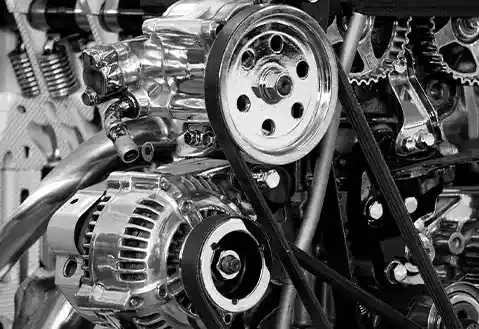- Arabic
- French
- Russian
- Spanish
- Portuguese
- Turkish
- Armenian
- English
- Albanian
- Amharic
- Azerbaijani
- Basque
- Belarusian
- Bengali
- Bosnian
- Bulgarian
- Catalan
- Cebuano
- Corsican
- Croatian
- Czech
- Danish
- Dutch
- Afrikaans
- Esperanto
- Estonian
- Finnish
- Frisian
- Galician
- Georgian
- German
- Greek
- Gujarati
- Haitian Creole
- hausa
- hawaiian
- Hebrew
- Hindi
- Miao
- Hungarian
- Icelandic
- igbo
- Indonesian
- irish
- Italian
- Japanese
- Javanese
- Kannada
- kazakh
- Khmer
- Rwandese
- Korean
- Kurdish
- Kyrgyz
- Lao
- Latin
- Latvian
- Lithuanian
- Luxembourgish
- Macedonian
- Malgashi
- Malay
- Malayalam
- Maltese
- Maori
- Marathi
- Mongolian
- Myanmar
- Nepali
- Norwegian
- Norwegian
- Occitan
- Pashto
- Persian
- Polish
- Punjabi
- Romanian
- Samoan
- Scottish Gaelic
- Serbian
- Sesotho
- Shona
- Sindhi
- Sinhala
- Slovak
- Slovenian
- Somali
- Sundanese
- Swahili
- Swedish
- Tagalog
- Tajik
- Tamil
- Tatar
- Telugu
- Thai
- Turkmen
- Ukrainian
- Urdu
- Uighur
- Uzbek
- Vietnamese
- Welsh
- Bantu
- Yiddish
- Yoruba
- Zulu
Dec . 31, 2024 01:45 Back to list
v belt
The Importance of V-Belts in Mechanical Systems
V-belts are a fundamental component in the realm of mechanical engineering, used predominantly for power transmission in various machines and vehicles. Their significance cannot be overstated, as they play an essential role in ensuring efficient operation in countless applications, from household appliances to large industrial machinery.
What is a V-Belt?
V-belts are characterized by their trapezoidal cross-section, which resembles the shape of the letter V. This design allows the belt to fit snugly into the grooves of pulleys, ensuring a strong grip and the efficient transfer of power. Typically made from rubber or composite materials, V-belts are designed to withstand varying degrees of tension and load, making them versatile for various settings.
Types of V-Belts
There are several types of V-belts available, each tailored for specific applications. The most common types include
1. Classical V-Belts The traditional design found in many mechanical systems, used extensively in agricultural and automotive applications. 2. Narrow V-Belts These have a thinner width and are often used in applications requiring higher speed or compact design.
3. Cogged V-Belts Featuring notches along their length, cogged belts offer flexibility and better grip around pulleys, primarily used in applications demanding high performance.
4. Variable Speed V-Belts Designed for machines where speed varies, these belts allow for efficient operation at various speeds and loads.
5. Poly-V Belts These have multiple ribs, providing a larger surface area for grip. They are often used in compact spaces where high power is needed.
Applications of V-Belts
V-belts are employed across numerous industries and applications, demonstrating their adaptability and crucial role in mechanical systems. Some of the most common applications include
- Automobiles V-belts are integral to the functioning of engines, connecting components like the alternator, water pump, and air conditioning compressor.
- Industrial Machinery In factories, V-belts drive conveyors, pumps, and fans, ensuring smooth operation and the efficient transfer of power
.v belt

- Home Appliances Many household devices, such as washing machines and refrigerators, utilize V-belts to drive motors and other components.
- Agricultural Equipment Tractors and other farming machinery rely on V-belts for transmitting power to various attachments and implements.
Advantages of V-Belts
One of the key benefits of V-belts is their ability to transmit power effectively over long distances, making them ideal for a wide range of mechanical systems. The design allows for minimal slippage, ensuring that almost all the power generated by the motor is transferred to the driven component.
Moreover, V-belts are relatively cost-effective and easy to replace, making maintenance simpler and less costly for businesses. Their flexibility and durability also contribute to their longevity, reducing the frequency of replacements and downtime in industrial settings.
Maintenance and Care
To maximize the lifespan and efficiency of V-belts, proper maintenance is essential. Here are some key tips
1. Regular Inspection Check V-belts for signs of wear, such as cracking, fraying, or glazing. Early detection of these issues can prevent larger problems in the system.
2. Proper Tension Ensuring that V-belts are correctly tensioned is crucial. Too loose or too tight belts can lead to increased wear and reduced efficiency.
3. Alignment Misalignment of the pulleys can cause uneven wear or premature failure of the V-belt. Regular checks for alignment can save time and resources.
4. Environment Consideration Operating conditions such as temperature, humidity, and exposure to chemicals can affect the lifespan of V-belts. Selecting the right type of belt for specific environmental conditions can enhance performance.
Conclusion
In conclusion, V-belts are an indispensable component in mechanical power transmission systems. Their versatility across various industries, coupled with their efficiency and ease of maintenance, underlines their importance in modern machinery. As technology continues to advance, the design and materials used in V-belts will likely evolve, further enhancing their performance and expanding their applications. For anyone involved in mechanical engineering, understanding the role of V-belts is crucial for ensuring the smooth operation of all types of machinery.
-
Upgrade Power Steering Pump Belt for Smooth, Quiet Operation
NewsAug.27,2025
-
Precision Timing Belt & Chain: Engine Performance & Durability
NewsAug.26,2025
-
Precision Lathe Drive Belts: Durable & Reliable Performance
NewsAug.25,2025
-
84.5 Serpentine Belt: Durable & Precision Fit for Your Engine
NewsAug.24,2025
-
Premium Ribbed Drive Belts for Quiet Power Transmission
NewsAug.23,2025
-
High-Performance Vehicle Timing Belt for Engine Precision
NewsAug.22,2025

